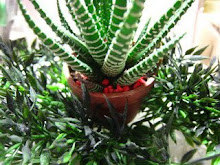"Dialogue as a way of Public Art: Restoring Biodiversity with Cultural
Diversity in the Environmental Art Action on the Southwest Coast of
Taiwan". 「對話作為一種公共藝術:以文化多樣性復育生物多樣性的環境藝術行動」
2017 Public Art Forum in Taichung
I presented a paper in the forum, titled: "Dialogue as a way of Public Art: Restoring Biodiversity with Cultural Diversity in the Environmental Art Action on the Southwest Coast of Taiwan". 「對話作為一種公共藝術:以文化多樣性復育生物多樣性的環境藝術行動」
An abstract of Chinese and English version below:
對話作為一種公共藝術:
以文化多樣性復育生物多樣性的環境藝術行動
正如同繪畫表面脫離了畫框和畫布的支撐,雕塑脫離了臺座;對話作為一種公共藝術的表現,也脫離了作品必須依附在物件上的必要性,進入空間,成為行動,乃至擴散到人群、社會以外的環境和生態。
2008年北回歸線環境藝術行動的海區蚵貝地景藝術論壇中,以對話作為切入環境的路徑,模糊了視覺性與非視覺性的界線,將藝術的公共性指向了常民生活中的日常和未來性。透過跨領域的對話,滾動式綜合治理策略,階段性行動方案,對話得以不斷孳生出相應的行動和新的對話,來回應變動的環境。
在這場長達十年的對話中,除了我們一向所習知的政府單位、專家學者、社區居民和藝術家之外,也納入了種種生物與非生物的對話:「大海是了不起的繪圖師,它每天都在重繪世界。」(Harrisons
2008) 「你有聽到蚵仔在唱歌嗎?」(Haley
2008) 「我對著鳥兒祈禱,因為他們提醒我們,所愛的事物而並非所怕的萬物。」(羅思容
2012)
。對話中更顯示出人與環境的交互關係以及對當地生態和生物的衝擊:「以前黃昏這個時候,海坪停滿紅嘴鷗,現在這些海坪被填成海埔新生地。」(副瀨村林前村長
2017),「潮間帶的消失碰上西南沿海大量廢晒的鹽田濕地,迫使這群原本停棲在海岸線潮間帶的鳥兒往內陸遷移。」(邱彩綢
2017)
面對這些生存環境中生物變遷所帶來的警示,當地居民如何安置自己在生態系中的位置?鹽工、漁民、農夫、蚵農、水產養殖業者、環境工作者、藝術家…又如何以生產方式回應和共同分擔對環境與生態的養護之心?在嘉義縣海岸地區的布袋鹽田濕地,提供了一個以文化多樣性復育生物多樣性的案例。
The full text please see here: https://publicart.forum.deoa.org.tw/papers/zlz.html
Also below:
公共藝術是一個發展中的概念。[1]
在台灣,早期的公共藝術是指設置在「公共空間」中的藝術品,最常以雕塑或空間裝置的形式呈現 [2]。逐漸地,公共藝術的概念被擴充至製作過程中的公共性(「公共參與」),與創作發想的公共性(「公共議題」)。1995年出版,並在2004年引進台灣,翻譯成中文版本的《量繪形貌:新類型公共藝術》一書中,有很多介紹,也帶來一定的影響力。例如,該書編者蘇珊•雷西在引言<文化朝聖與隱喻式的旅程>一文中提及,有些藝術家發展出一些傑出的模式,「把公共策略視為美學語言的一部份」[3]。在此模式下,溝通/對話因而成為重要的方法[4]。中文版編/譯者吳瑪悧更是身體力行者,從早期參與2004年海安路藝術造街時的作品《公民論壇》,到後來策劃《北回歸線環境藝術行動》,以及近期的《樹梅坑溪環境藝術行動》,無不是上述精神的體現。
協商與對話原本就是北回歸線環境藝術行動[5]中所強調的過程與精神[6],經過三年積累後,在2008年北回歸線環境藝術行動中的海區計畫「蚵貝地景藝術論壇」中有了更進一步的發展。這個以跨領域交鋒為基礎的論壇,邀集了包括藝術家、策展人、不同領域的專家學者[7],和在地社群組織,以及相關政府官員的參與,為了解決嘉義縣沿海地區蚵產業所衍生的廢棄蚵殼帶來的環境衛生問題,思考以藝術手法,將廢棄蚵殼作為材料,在已經廢曬的鹽田上進行地景藝術創作。
由於嘉義縣的沿海鄉鎮(東石鄉和布袋鎮)是台灣蚵產業重鎮,在思考沿海地區的環境問題時,顯而易見的廢棄蚵殼堆自然成為首當其衝的環境衛生問題。為了要快速消化這些所謂環境衛生問題的元凶,藝術被視為是解決問題的最佳手段,一來可以擔當起廢棄物回收再利用的任務,符合零廢棄的環保概念,二來可以在看似一片荒蕪的西南海岸上,創造一個(或數個)視覺上的驚艷焦點。從這個角度出發,解決問題的方向同時涉及地方政府部門中的三個局處,分別是掌管文化藝術的文化局、處理產業廢棄物相關的縣政府農業處(漁業科),和負責環境衛生的環保局,以及提供廢曬鹽灘地作為廢棄蚵殼堆置場所的代管機關雲嘉南國家風景區管理處,和周遭社區[8]。論壇的目的,便是要集結這些單位的資訊和眾人的討論,擬出可執行的最佳方案,回饋給政府機關作為未來執行計畫的參考依據。
論壇分為兩階段進行,第一階段是自外國專家抵達開始,以生態導覽和基地考察為主,以及產業參訪和與社區居民對話。第二階段則是密集的學者專家對話,包括兩天的論壇會議、綜合討論,以及第三天以地景藝術方案彙整為主旨的工作坊。在第三天的工作坊中,透過集體創作的腦力激盪,彙整出一份蚵貝未來企劃案,提出了三項作品方案,以及英國生態藝術家David
Haley所提出的五個方案,供給相關政府部門參考運用。[9]然而這些作品方案最終並未獲得任何政府部門的支持與執行。但有趣的是,論壇的結果卻以另一種方式在地方上深化發展。它標記了藝術的定義和功用在此有了進一步的轉化,從一種被急切地想要用來解決眼前問題的短期速成手段,過渡到一種幽微卻持續深化的長期發酵。
當時受邀參與的顧問之一,英國生態藝術家David Haley為論壇發表的計畫為《與蚵對話─協力的藝術》,其中提到:「計畫由問題開始,逐漸開展為多方的對話。對話不在於產生新知識,而在改變我們思考的模式[10]。對話有時需要一位協力者,而這正是藝術家可以擔任的角色。對話本身可以是一件作品,也可以是產生其它作品的基礎。[11]」十年之後,他在重新回顧這個計畫時做了進一步闡釋,寫道:「『對話』…… 建構了一種和相關人物及其他生命形式之間的特別關係,…… 它是一種可和許多生命交會,並在彼此交集過程中找到意義的方法。…… 在此對話中,蚵仔也包含在內……如此一來引發了一個疑問,也就是『非人類』或『人類以外』的生命的權利,是否也應納入考慮。…… (而這正是)[12]生態思考的催生器。」[13]
David Haley所提出的觀點,為當年的論壇提供了一個重要的論述基礎。在論壇的多方交會中,也發現原先被視為環境衛生污染源的蚵殼,其實具有多重經濟和生態價值[14],而原先被視為無用的廢鹽灘,其實也蘊涵著豐富的生態資源。同時,一個具有全球性高度,更是地方需要切身面對的環境問題在論壇上被提了出來,也就是氣候變遷、全球溫室效應和海水上升的挑戰。[15]
支撐著David Haley這個論述基礎的論壇架構,有三個方面,除了原本就已進行的北回歸線環境藝術行動的精神外,官方的態度也十分重要,當時的嘉義縣文化局局長鍾永豐提到:「我們文化局也沒有那麼天真。事實上,在去年提出這個計畫時,我們也不敢像一般單位,請一兩位藝術家,找一兩個牆面,用蚵貝藝術作一兩件裝置,因為我們了解這個問題的嚴重程度。」[16]因而把一個聚焦在產業廢棄物的地景藝術計畫,先擴大為對整個嘉義縣沿海兩鄉鎮(東石、布袋)環境議題做整體檢視,再思考藝術作品如何來回應這個議題。[17]
另外,蚵貝地景藝術論壇的召集人,出身布袋鹽工家庭的台大城鄉基金會資深規劃師蔡福昌,也對論壇的設定目標抱持著相當開放的界定。[18]因此,儘管論壇結束了,針對消化蚵殼而生的地景藝術創作工作坊所企劃的未來建議作品方案也並未執行,但在後續發展中,因蔡福昌以規劃師的角色和身份,承接了在論壇中所引發的對話效應,分別藉由雲嘉南國家風景區管理處委託的「南布袋濕地改善復育調查規劃」研究以及嘉義縣政府因應「布袋濕地公園」硬體建設完工後,如何進行經營管理的計畫,將更多在地和跨領域人士捲動進來,產生更多新的對話,也讓公共論述的能量從論壇更進一步地向外釋放。
這兩項計畫,一項著重在基地的調查,一項著重於人/社區與環境的連結。前者,在雲嘉南國家風景區管理處的委託下,展開了嘉義縣海岸地區的深度調查,包括水文、生態、社區、文史、產業等面向,並進行全區發展規劃。而調查結果發現,位於沿海地帶的鹽田廢曬之後,經過自然演替,不但成為生態豐富的海岸濕地,而且有大量鳥類來此棲息,其中甚至包括列入瀕危等級的國際保育鳥種黑面琵鷺。原來被視為荒蕪之地的廢棄鹽灘,竟然是鳥類棲息的濕地天堂。因而在區域規劃方面,採取了生物圈保留區的理念,以物種保育為優先,尊重原有的地形、地貌,並衡量規劃範圍內的環境資源條件、地點區位、交通動線和設施現況等因素綜合評估,將整個規劃範圍區分為五大主題分區,做為未來濕地改善復育的空間治理架構。這當中,生態復育和氣候變遷扮演了核心價值的概念。藝術則被賦予行動的媒介此一角色,「藉由多元參與式行動計畫的介入,集體拼貼與共創濕地復育地景。」[19]
後者,蔡福昌和其團隊以所謂「滾動式綜合治理策略」進行實踐,也就是透過延展時間的軸線,先啟動所謂「先導性行動方案,待於變動中與自然環境互動一段時間與反省評估後,再研擬下一階段的實施項目,並據此調整或修正下一階段的願景和目標。」先導計畫包括了濕地生態環境的各項學習工作坊,並透過駐村協力,希望能「培力氣候變遷時代的低碳綠色公民,培養原創學習能力」,以及「強化在地參與機制,連結學校、教育機構、社區、民間組織和專業者(機構)等之跨領域協力伙伴關係和專業支援網絡,厚實永續經營基石。」[20]
參與這項先導性行動方案的人士包括有:駐村藝術家、社區規劃師、漁民、農夫、鹽村居民、生態養殖業者、生態環境保育人士、地方文史工作者、紀錄片工作者,乃至在地學校師生與生態和水利及海洋工程等專業學者。透過各項學習工作坊,這群人不但彼此建立起連結,逐漸形成一個地方網絡,並且也從各自的角色上發揮為整體環境的努力。例如:自力研發風車綠能並積極在校園中推廣的社區人士李泳宗;誓願要養出快樂的蝦子的水產生態養殖業者邱經堯;主張「人鳥共存」,生態和經濟是可以互不相斥的漁民蔡俊南;把觀察環境變遷和紀錄視為己任,並積極以公民參與的身份回應相關環境政策的紀錄片工作者邱彩綢;和引導學生培養環境生態觀察能力及興趣的新岑國小…… ,他們都以具體的生產行動和生態關注,反映了David Haley所提出的「積極的生活本身便是社區/社群的藝術。這種積極性在社區/社群中是個不斷進行的過程,而這過程也才能回應地景、地貌乃至海岸地區的變遷。」[21]同時這也是蔡福昌所提出的「以文化多樣性來復育生物多樣性」的具體實踐。
2008年北回歸線環境藝術行動的海區蚵貝地景藝術論壇中,以對話作為切入環境的路徑,模糊了視覺性與非視覺性的界線,將藝術的公共性指向了常民生活中的日常和未來性。透過跨領域的對話,滾動式綜合治理策略,階段性行動方案,對話得以不斷孳生出相應的行動和新的對話,來回應變動的環境。
在這場長達十年的對話中,除了我們一向所習知的政府單位、專家學者、社區居民和藝術家之外,也納入了種種生物與非生物的對話:「大海是了不起的繪圖師,它每天都在重繪世界。」(Harrisons 2008) 「你有聽到蚵仔在唱歌嗎?」(Haley 2008) 「我對著鳥兒祈禱,因為他們提醒我們,所愛的事物而並非所怕的萬物。」(羅思容 2012) 。對話中更顯示出人與環境的交互關係以及對當地生態和生物的衝擊:「以前黃昏這個時候,海坪停滿紅嘴鷗,現在這些海坪被填成海埔新生地。」(副瀨村林前村長 2017),「潮間帶的消失碰上西南沿海大量廢晒的鹽田濕地,迫使這群原本停棲在海岸線潮間帶的鳥兒往內陸遷移。」(邱彩綢 2017)
這些對話的漣漪,是一個又一個向著環境進行的扣問,每一位對話參與者,在變遷論述中都可以是積極的主角。在此,藝術是提問的方法[22],透過蚵貝地景藝術論壇及其後續效應,讓我們了解到,「轉化的藝術不在於試圖解決那些所面對的棘手問題,而是從這些棘手問題中學習。」[23]而在這樣的學習中,沒有所謂創作主體性的困擾。面對環境,每一個身在其中的人都可以成為創造的主體,為下一個(人類與非人類)世代留下更好的環境。
Dialogue
as Public Art:
An
Environmental Art Action applying Cultural Diversity as a way to
achieve Biodiversity
Dialogue
as public art has set art free from the necessity of attaching itself
to the objects. Rather, art can be at any spaces, become actions, and
disperse to the environment and ecology beyond the conventional human
societies.
Since
the Conference of Oyster Shell Land Art within the programme of Art
as Environment: A Cultural Action on Tropic of Cancer
2008, dialogue has been introduced as an art to delve into the
environment of the abandoned salt fields and coastal wetlands in
Budai, Chiayi. The practice obscured the boundary between the visual
and the non-visual. The publicness of art was directed to the
dailiness and futureness in civic life. By means of interdisciplinary
dialogue, rolling correction and unified management, along with
priority action plans in different stages, the dialogue expand and
extend, creating more corresponding actions and new bouts of
dialogue, to respond to the changing environment. This practice
provides a good example of ecological conservation by preserving
biodiversity with cultural diversity.
The full text please see here: https://publicart.forum.deoa.org.tw/papers/zlz.html
Also below:
對話作為一種公共藝術:以文化多樣性復育生物多樣性的環境藝術行動
周靈芝(藝術家)
公共藝術是一個發展中的概念。[1]
在台灣,早期的公共藝術是指設置在「公共空間」中的藝術品,最常以雕塑或空間裝置的形式呈現 [2]。逐漸地,公共藝術的概念被擴充至製作過程中的公共性(「公共參與」),與創作發想的公共性(「公共議題」)。1995年出版,並在2004年引進台灣,翻譯成中文版本的《量繪形貌:新類型公共藝術》一書中,有很多介紹,也帶來一定的影響力。例如,該書編者蘇珊•雷西在引言<文化朝聖與隱喻式的旅程>一文中提及,有些藝術家發展出一些傑出的模式,「把公共策略視為美學語言的一部份」[3]。在此模式下,溝通/對話因而成為重要的方法[4]。中文版編/譯者吳瑪悧更是身體力行者,從早期參與2004年海安路藝術造街時的作品《公民論壇》,到後來策劃《北回歸線環境藝術行動》,以及近期的《樹梅坑溪環境藝術行動》,無不是上述精神的體現。
協商與對話原本就是北回歸線環境藝術行動[5]中所強調的過程與精神[6],經過三年積累後,在2008年北回歸線環境藝術行動中的海區計畫「蚵貝地景藝術論壇」中有了更進一步的發展。這個以跨領域交鋒為基礎的論壇,邀集了包括藝術家、策展人、不同領域的專家學者[7],和在地社群組織,以及相關政府官員的參與,為了解決嘉義縣沿海地區蚵產業所衍生的廢棄蚵殼帶來的環境衛生問題,思考以藝術手法,將廢棄蚵殼作為材料,在已經廢曬的鹽田上進行地景藝術創作。
由於嘉義縣的沿海鄉鎮(東石鄉和布袋鎮)是台灣蚵產業重鎮,在思考沿海地區的環境問題時,顯而易見的廢棄蚵殼堆自然成為首當其衝的環境衛生問題。為了要快速消化這些所謂環境衛生問題的元凶,藝術被視為是解決問題的最佳手段,一來可以擔當起廢棄物回收再利用的任務,符合零廢棄的環保概念,二來可以在看似一片荒蕪的西南海岸上,創造一個(或數個)視覺上的驚艷焦點。從這個角度出發,解決問題的方向同時涉及地方政府部門中的三個局處,分別是掌管文化藝術的文化局、處理產業廢棄物相關的縣政府農業處(漁業科),和負責環境衛生的環保局,以及提供廢曬鹽灘地作為廢棄蚵殼堆置場所的代管機關雲嘉南國家風景區管理處,和周遭社區[8]。論壇的目的,便是要集結這些單位的資訊和眾人的討論,擬出可執行的最佳方案,回饋給政府機關作為未來執行計畫的參考依據。
蚵貝地景藝術論壇的方法及階段性成果
當時受邀參與的顧問之一,英國生態藝術家David Haley為論壇發表的計畫為《與蚵對話─協力的藝術》,其中提到:「計畫由問題開始,逐漸開展為多方的對話。對話不在於產生新知識,而在改變我們思考的模式[10]。對話有時需要一位協力者,而這正是藝術家可以擔任的角色。對話本身可以是一件作品,也可以是產生其它作品的基礎。[11]」十年之後,他在重新回顧這個計畫時做了進一步闡釋,寫道:「『對話』…… 建構了一種和相關人物及其他生命形式之間的特別關係,…… 它是一種可和許多生命交會,並在彼此交集過程中找到意義的方法。…… 在此對話中,蚵仔也包含在內……如此一來引發了一個疑問,也就是『非人類』或『人類以外』的生命的權利,是否也應納入考慮。…… (而這正是)[12]生態思考的催生器。」[13]
David Haley所提出的觀點,為當年的論壇提供了一個重要的論述基礎。在論壇的多方交會中,也發現原先被視為環境衛生污染源的蚵殼,其實具有多重經濟和生態價值[14],而原先被視為無用的廢鹽灘,其實也蘊涵著豐富的生態資源。同時,一個具有全球性高度,更是地方需要切身面對的環境問題在論壇上被提了出來,也就是氣候變遷、全球溫室效應和海水上升的挑戰。[15]
支撐著David Haley這個論述基礎的論壇架構,有三個方面,除了原本就已進行的北回歸線環境藝術行動的精神外,官方的態度也十分重要,當時的嘉義縣文化局局長鍾永豐提到:「我們文化局也沒有那麼天真。事實上,在去年提出這個計畫時,我們也不敢像一般單位,請一兩位藝術家,找一兩個牆面,用蚵貝藝術作一兩件裝置,因為我們了解這個問題的嚴重程度。」[16]因而把一個聚焦在產業廢棄物的地景藝術計畫,先擴大為對整個嘉義縣沿海兩鄉鎮(東石、布袋)環境議題做整體檢視,再思考藝術作品如何來回應這個議題。[17]
另外,蚵貝地景藝術論壇的召集人,出身布袋鹽工家庭的台大城鄉基金會資深規劃師蔡福昌,也對論壇的設定目標抱持著相當開放的界定。[18]因此,儘管論壇結束了,針對消化蚵殼而生的地景藝術創作工作坊所企劃的未來建議作品方案也並未執行,但在後續發展中,因蔡福昌以規劃師的角色和身份,承接了在論壇中所引發的對話效應,分別藉由雲嘉南國家風景區管理處委託的「南布袋濕地改善復育調查規劃」研究以及嘉義縣政府因應「布袋濕地公園」硬體建設完工後,如何進行經營管理的計畫,將更多在地和跨領域人士捲動進來,產生更多新的對話,也讓公共論述的能量從論壇更進一步地向外釋放。
從蚵殼到海岸變遷,從鹽田到濕地
後者,蔡福昌和其團隊以所謂「滾動式綜合治理策略」進行實踐,也就是透過延展時間的軸線,先啟動所謂「先導性行動方案,待於變動中與自然環境互動一段時間與反省評估後,再研擬下一階段的實施項目,並據此調整或修正下一階段的願景和目標。」先導計畫包括了濕地生態環境的各項學習工作坊,並透過駐村協力,希望能「培力氣候變遷時代的低碳綠色公民,培養原創學習能力」,以及「強化在地參與機制,連結學校、教育機構、社區、民間組織和專業者(機構)等之跨領域協力伙伴關係和專業支援網絡,厚實永續經營基石。」[20]
參與這項先導性行動方案的人士包括有:駐村藝術家、社區規劃師、漁民、農夫、鹽村居民、生態養殖業者、生態環境保育人士、地方文史工作者、紀錄片工作者,乃至在地學校師生與生態和水利及海洋工程等專業學者。透過各項學習工作坊,這群人不但彼此建立起連結,逐漸形成一個地方網絡,並且也從各自的角色上發揮為整體環境的努力。例如:自力研發風車綠能並積極在校園中推廣的社區人士李泳宗;誓願要養出快樂的蝦子的水產生態養殖業者邱經堯;主張「人鳥共存」,生態和經濟是可以互不相斥的漁民蔡俊南;把觀察環境變遷和紀錄視為己任,並積極以公民參與的身份回應相關環境政策的紀錄片工作者邱彩綢;和引導學生培養環境生態觀察能力及興趣的新岑國小…… ,他們都以具體的生產行動和生態關注,反映了David Haley所提出的「積極的生活本身便是社區/社群的藝術。這種積極性在社區/社群中是個不斷進行的過程,而這過程也才能回應地景、地貌乃至海岸地區的變遷。」[21]同時這也是蔡福昌所提出的「以文化多樣性來復育生物多樣性」的具體實踐。
結語
在這場長達十年的對話中,除了我們一向所習知的政府單位、專家學者、社區居民和藝術家之外,也納入了種種生物與非生物的對話:「大海是了不起的繪圖師,它每天都在重繪世界。」(Harrisons 2008) 「你有聽到蚵仔在唱歌嗎?」(Haley 2008) 「我對著鳥兒祈禱,因為他們提醒我們,所愛的事物而並非所怕的萬物。」(羅思容 2012) 。對話中更顯示出人與環境的交互關係以及對當地生態和生物的衝擊:「以前黃昏這個時候,海坪停滿紅嘴鷗,現在這些海坪被填成海埔新生地。」(副瀨村林前村長 2017),「潮間帶的消失碰上西南沿海大量廢晒的鹽田濕地,迫使這群原本停棲在海岸線潮間帶的鳥兒往內陸遷移。」(邱彩綢 2017)
這些對話的漣漪,是一個又一個向著環境進行的扣問,每一位對話參與者,在變遷論述中都可以是積極的主角。在此,藝術是提問的方法[22],透過蚵貝地景藝術論壇及其後續效應,讓我們了解到,「轉化的藝術不在於試圖解決那些所面對的棘手問題,而是從這些棘手問題中學習。」[23]而在這樣的學習中,沒有所謂創作主體性的困擾。面對環境,每一個身在其中的人都可以成為創造的主體,為下一個(人類與非人類)世代留下更好的環境。
- [1] 依行政院文化建設委員會《公共藝術設置作業參考手冊》所指,「公共藝術是一個發展中的概念,從廣義的方面來看,指的是發生在公共空間且能與周遭環境互相配合的各式各樣藝術創作;狹義地說,就是根據行政院文化建設委員會所擬定,並經立法通過之『文化藝術獎助條例』第九條第一項及第三項規定,運用公有建築物百分之一經費和大型公共工程的部分經費,在公共空間中完成藝術品之設置;其藝術品的種類相當廣泛,表現形式也各異其趣。」(文建會,1998。資料來源:關於公共藝術 http://web.ntnu.edu.tw/~495020699/introduce.html)
- [2] 例如:1998 年台北市捷運局台大醫院站月台公共藝術李光裕的作品,或是徐秀美在台北敦化藝術通廊發表的公共藝術「鳥籠外的花園」,1999年。
- [3] 見:蘇珊•雷西 (Suzanne Lacy),《量繪形貌》引言,<文化朝聖與隱喻式的旅程>,2004年11月,遠流出版,p.27。
- [4] 「藝術植基於『傾聽』本身,它把自我與它者交織一起,提供一種透過經驗的流動。它不是透過自我去定界限,而是透過相互的同理心模式擴展到社區。因為這種藝術是以傾聽者為核心,而不是以視像為依歸。它無法透過個人表白的方式被理解,只有透過對話才能完整呈現,做為一個開放性的對話,一個人傾聽,並且包含進其他人的聲音。」見:蘇西•蓋伯利克(Suzi Gablik),<連結性的美學:個人主義之後的藝術>,《量繪形貌》第三章,2004年11月,遠流出版,p.100。
- [5] 由於嘉義縣是北回歸線在台灣西部所跨越的唯一縣市,自2005年起嘉義縣文化局所開展並逐年演化的北回歸線環境藝術行動,從原來是一場藝術節的活動,轉變為藝術家進入社區的駐村實驗(p.47)。2006年策展人吳瑪悧和嘉義縣前文化局長鍾永豐以「藝術行動」取代普遍在各地舉行的藝術節活動,「以藝術作為環境」(吳瑪悧語),且「把節慶轉型為公共服務」。這樣的作法,大大地改變了藝術舊有的定義,甚至更進一步地翻轉藝術家與居民之間的主體性,並創造一個學習社群的概念,顛覆模式化的公共藝術操作(p.171)。引用自:周靈芝,《對話之後:一個生態藝術行動的探索》,2017年10月,南方家園出版社。
- [6] 見:簡義明,<緩慢的力量:「2007年嘉義縣北回歸線環境藝術行動」到底問/做了什麼?>,收錄於《嘉義縣北回歸線環境藝術行動,2008》,嘉義縣政府,2008,p.15。
- [7] 例如:經濟學家、水產生態學家、土木工程師、大氣科學家、環境教育者和環保人士等。
- [8] 見:周靈芝,《對話之後:一個生態藝術行動的探索》,2017年10月,南方家園出版社,p.53-54。
- [9] 同上,p.59。
- [10] 粗體為本文作者所加。
- [11] 見:<與蚵對話:協力的藝術>,收錄於《嘉義縣北回歸線環境藝術行動,2008》,嘉義縣政府,2008,p.108。
- [12] 括號內文字為本文作者所加。
- [13] 例如:蚵仔會受到氣候變遷的影響嗎?到什麼程度?蚵仔和蚵產業之間有什麼關係?為什麼蚵殼被當成廢物?…… 引用自:<時光流轉:轉化的藝術>,大衛•黑利推薦序,收錄於《對話之後:一個生態藝術行動的探索》,2017年10月,南方家園出版社,p.4-5。
- [14] 例如:作為肥料、飼料、藥品、化妝品、建材、改善土質、作為魚池的填方,甚至製成消波塊、人工關節,以及淨化水質等。見:《對話之後:一個生態藝術行動的探索》,2017年10月,南方家園出版社,p.56。
- [15] 見:《對話之後:一個生態藝術行動的探索》,2017年10月,南方家園出版社,p.57-58。
- [16] 見:「綜合討論」紀錄,收錄於《嘉義縣北回歸線環境藝術行動,2008》,嘉義縣政府,2008,p.128。
- [17] 見:《對話之後:一個生態藝術行動的探索》,2017年10月,南方家園出版社,p.48-49。
- [18] 他寫道:「期望在跨領域的交鋒中,針對沿海地區有關蚵仔產業發展、地層下陷、土壤鹽化等議題,匯聚蚵貝地景藝術的創作能量與可行劇本,並成為有助於公共發展的論述。」見:《對話之後:一個生態藝術行動的探索》,2017年10月,南方家園出版社,p.55。
- [19] 見:《對話之後:一個生態藝術行動的探索》,2017年10月,南方家園出版社,p.34。
- [20] 同上,p.35。
- [21] 同上,p.35,p.124。
- [22] 吳瑪悧語,見:《對話之後:一個生態藝術行動的探索》,2017年10月,南方家園出版社,p.22。
- [23] David Haley語,見:《對話之後:一個生態藝術行動的探索》,2017年10月,南方家園出版社,p.10。

















